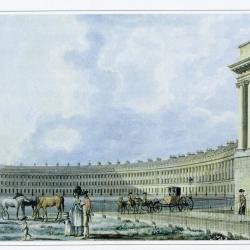![Basilius Besler, 'Fasciculus rariorum...(s. l. [Nuremberg], 1616)'. Cabinets of curiosities](/sites/default/files/styles/notice_teaser/public/notices/Besler%20image%201.jpg?h=41167dc9&itok=PHUUp5ry)
Cabinets of curiosities
MARRACHE-GOURAUD Myriam
Au milieu du XVIe siècle, certains princes européens fortunés commencent à réunir des collections d’objets précieux, ou mirabilia, issus de la nature (naturalia) ou des arts (artificialia). La rareté de ces objets, leur excellence, leur bizarrerie énigmatique provoquent l’admiration. C’est l’étonnement devant la beauté ou la monstruosité qui désigne ces pièces comme des curiosités à élucider, et à montrer dans des ‘cabinets’.

Robinson’s and Friday’s Island
SETTE Miriam
The doctrine of natural law may well be the cornerstone of Daniel Defoe’s cultural formation. When Robinson Crusoe digs into his conscience, he discovers a universal reason, namely the jus gentium, the right common to all peoples, beyond their single historicity.

Spa sociability in Bath and Pyrmont
COSSIC Annick
WOOD Karl
Bath and Pyrmont were each renowned for their waters in the long eighteenth century. Bath set up an innovative model of spa sociability that supposedly exemplified the main principles of an ‘open society,’ while Pyrmont also defined a new approach to spa life but along different lines.